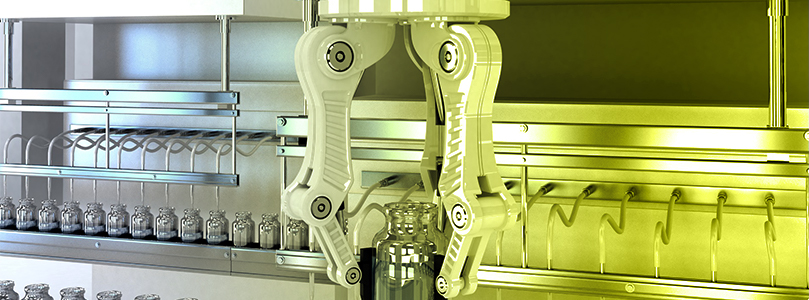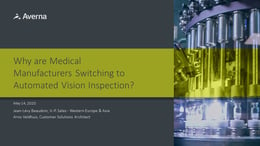
The QA processes for medical products have always been more specific and stringent than other industries. Obviously, the health impact on the end user is the key consideration, but depending on the product being manufactured, the quality requirements shift a great deal. For example, any device designed to be implanted into a human body not only requires a flawless design and execution, but a long product lifetime as well. This is completely contrary to other fields within medical manufacturing such as plungers and stoppers. Here, mass manufacturing is at play and exact duplication is the quality priority.
Additionally, technologies are advancing quickly. What was once impossible for medical applications has now become very commonplace. 20 years ago, the concept of a wearable heart monitor, that also tracks your steps and sleep patterns was unthinkable. The RF capabilities simply were not available in an industry certified capacity. The fears of privacy-invasion, safety-concerns, high power-consumption, incompatibility with other devices and RF interference put a stop to any major development in wireless communication for medical devices. Then came the low-cost solution of Bluetooth Low Energy (BLE). Not only did this technology make medical RF products affordable, but it also made them safer. As a result, the commercial market opened up and created a huge demand. Today, the public has access to hundreds of new healthcare devices and is constantly looking for improvements and upgrades.
To move forward, compliance standards need to be developed and evolve alongside the technology itself. This falls to manufacturers who must adapt quickly to remain in line for release. Lately, medical manufacturers are employing several different strategies to achieve higher product quality and faster time to market.
Strategy #1 - Automation
The benefits of automating test for medical applications are enormous. It is truly the backbone to reliability and consistency. There are certainly times when manual labor can suffice, such as low-volume and low-complexity manufacturing, but the medical industry relies on flawlessness and repeatability to meet compliance standards and to treat patients safely. This simply becomes more challenging when relying on manual interactions.
A major benefit that automation can bring is the ability to continue working while processes run unattended. This simplifies the allocation of personnel, allowing them to focus on their primary objective while production continues to run 24/7. When testing the longevity or durability of a product, often it is best to just start it and walk away.
Automated visual inspection is an example of test automation that is becoming more prevalent in the medical industry as part of the required quality screening. Machine vision detects flaws invisible to the human eye alone at incredibly high speeds for multiple units simultaneously. Results are based entirely on predefined settings, leaving no room for questions or opinions. If a similar task is performed manually, generally it requires specialized technicians who can only inspect one item at a time. Often times a microscope will be required, forcing them to stop and refocus. This is a long, tedious and expensive process, with results remaining subjective to the operator on duty.
Robotics handling is another technology that is growing within the medical industry delivering better and faster assembly. With components of subassemblies getting smaller they become more difficult to manipulate. There has been an impressive growth in the capabilities of robotic arms, and they have become faster and more consistent than what can be performed by a human technician.
Additionally, automated processes require no further training. Once a system is operational, it is all systems go! Manual labor involves expensive training periods, ramp up and unfortunate turnover that restarts the process. If an operator misunderstands any of the requirements, this adds a layer of risk that can easily be overlooked, sending bad products out to the field.
These technicians become free to focus their efforts elsewhere while a system can multitask other operations. Both the machine and the man can achieve more and get better data out of it. Automating test processes delivers all test results automatically in an organized fashion for simplified documentation.
Strategy #2 – Standardization
Standardizing is not always looked at as a means to accelerate production, but it turns out to be a major contributor. By standardizing test equipment there are some obvious benefits, including flexibility and future proofing which have a huge impact on the total cost of operations. The ability to reuse the same equipment across multiple form factors and product lines not only maximizes the value of the initial investment but also minimizes operator training. Having the same equipment company-wide with the same look and feel gives an employee the ability to follow the same procedures regardless of his or her work location. This saves everyone time and minimizes inconsistencies from one factory to the next.
And the time savings is not limited to training. Product requirements will always become more and more complex, therefore manufacturing processes will need to adapt accordingly. There will rarely be an off-the-shelf solution to cover the extensive quality requirements that are dictated by the industry. Customized solutions address this need and by standardizing the design, it will allow the user to be agile and grow along with the ever-changing compliance regulations.
By re-using the same platform, test development time is also significantly reduced when introducing new products. Standardized and flexible test equipment allow for growth and expansion with minor hardware and software tweaks. This allows a business to constantly reuse the same equipment as companies continue to innovate. This is a more long-term investment that will always lower the total cost of ownership, but may cost a little more upfront.
Strategy #3 – Smart Data Management
Data has become one of the most valuable commodities in manufacturing. To begin with, results and proper documentation have always been a key component to the medical field to meet compliance. With better organization of data and traceability, a product can be proven to perform up to standard and get out in the field faster.
By automating the collection and organization of this data directly from manufacturing assets is reliable, accurate and FAST. With the right tools to manipulate data, engineers can spend their time focusing on projects and process development instead of looking for the information they need.
This data can then be used to isolate any quality issues that may arise. A proper data management system will easily determine the root cause of an issue. By understanding if a problem is due to product design, a supplier issue, the manufacturing process or the test solution itself, teams can quickly begin working on a resolution.
Additionally, the data that is being collected is communicating more than just the unit under test (UUT) information. It will also disclose the status of the manufacturing floor itself! Patterns emerge from manufacturing assets and demonstrate shifts in behavior. By processing this data, preventive maintenance can be scheduled at convenient times, avoiding dangerous and expensive shutdowns.
Strategy #4 - Outsourcing
This point alone can be the main driver in speeding up production while quality continually improves. No one will understand your product the way you do, but by outsourcing test, engineers gain the freedom to focus on the actual product.
By engaging an outside team dedicated to quality, their experience alone is an asset that cannot be mimicked. The exposure to different applications and test methods ensures the test process will be thorough and efficient.
Cost is generally the main concern preventing companies from outsourcing. At the end of the day, it needs to be worthwhile and while already having a dedicated group of engineers on board, it can come across as an unnecessary expense. However, in reality more often than not, companies save money quickly by contracting out to an experienced group. Investing time into evaluating the true and hidden costs of test and comparing those to the cost of outsourcing is time well spent.
We live in a time where everything needs to happen fast, but when it comes to the medical industry, it can never be at the cost of quality. By looking at the different options in front of them, medical manufacturers are now adapting their manufacturing processes to keep up with demand. As a result of automation, standardization, data management and outsourcing, they are achieving their goals, which allows the rest of us to benefit!
You may also be interested in…
Did you miss our webinar on why medical manufacturers are switching to automated vision inspection? It’s not too late, download it today!
Get in touch with our experts or navigate through our resource center.
